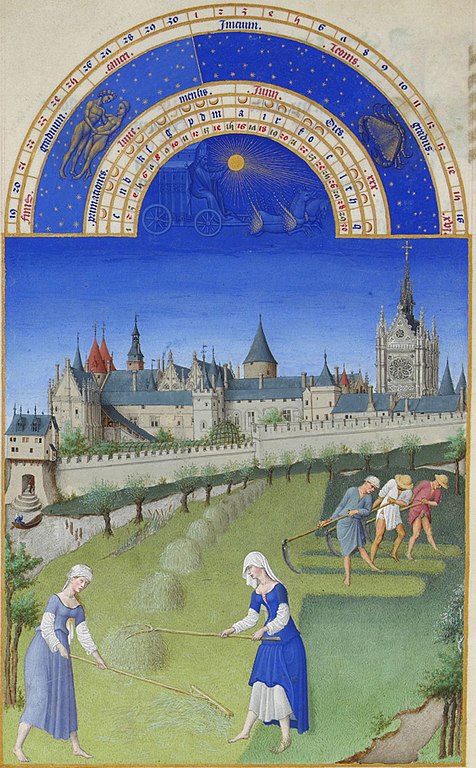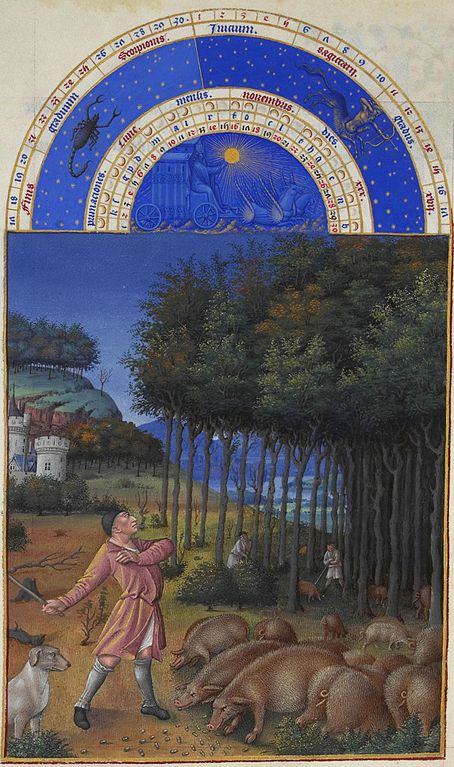
From Très Riches Heures du duc de Berry Folio 6, verso: June
Between 1412 and 1416, circa 1440 or between 1485 and 1486
Public Domain via Wikimedia Commons
June is the sixth month on both the Gregorian and Julian calendars. June is one four months to be only 30 days long. June marks the beginning of summer in the Northern Hemisphere (and the reverse below the equator.) The Summer Solstice usually occurs between the 20-22 of the month and is the longest day of the year. June gets its name from the Latin Iunius, which was used on the old Roman calendar (which June was the fourth month since March used to be the first month) and believed to be named for the Roman god Juno. Juno was the wife and sister of Jupiter (the Roman version of Zeus, king of the gods). Juno was the protector of the nation and watched over women. She was also associated with youth.
Midsummer is celebrated in June on the summer solstice or St. John’s Day on 24 June. It is mainly celebrated in Denmark, Finland, Norway, and Sweden but the Baltic countries of Estonia, Latvia, and Lithuania celebrate it as well. Father’s Day is celebrated around the world in June but not on the same date. 19 June is Juneteenth, a federal holiday in the United States, which commemorates the Emancipation Proclamation read aloud in Galveston, Texas. This freed the enslaved people in the state that had been outside of Union Army control.

Les Roses by Pierre-Joseph Redouté (1759-1840)
Photo:Public Domain (US Library of Congress: lccn.loc.gov/50049695)
It is a month of celebrations and weddings are very popular during this month. During Roman times getting married during the month of June was considered lucky and has become traditional since then as the month for preferred weddings. The June symbols are pearl, alexandrite and moonstone for the birthstones, with the rose and honeysuckle for the flowers. Although officially summer does not begin until the solstice, for commercial and agricultural purposes summer begins when the month begins.
Sources
“The Month of June 2024: Holidays, Fun Facts, Folklore.” Almanac.com, 29 May 2024, www.almanac.com/content/month-june-holidays-fun-facts-folklore.
The Month of June. www.timeanddate.com/calendar/months/june.html.
—. June – Wikipedia. 2 June 2024, en.wikipedia.org/wiki/June.











